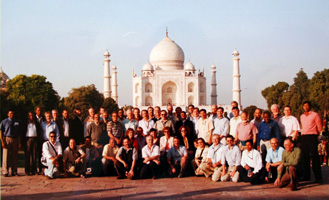India, already the world’s biggest milk producer and beef exporter (mostly water buffalo), is investing in research to ensure that its poorest people reap increasing benefits from raising farm animals and do so in increasingly sustainable and healthy ways (photo credit: ILRI/Susan MacMillan).
Key recommendations from a high-level partnership dialogue held last November (2012) by the International Livestock Research Institute (ILRI) and the Indian Council for Agricultural Research (ICAR) have recently been published. These policy recommendations from ILRI and ICAR were released last week in New Delhi, India, by ILRI’s director general Jimmy Smith and ILRI’s deputy director general for integrated sciences John McIntire.
The ILRI-ICAR white paper distills major recommendations made at the partnership dialogue and serves as a basis for pro‐poor and sustainable livestock policy interventions in India.
The following excerpt is from the executive summary of this new publication.
‘With 485 million livestock plus 489 million poultry, India ranks first in global livestock population. Livestock keeping has always been an integral part of the socio‐economic and cultural fabric of rural India. In recent years, India’s livestock sector has been booming. Livestock now contribute about 25% of the output of the agricultural sector and the sub‐sector is growing at a rate of about 4.3% a year. With over 80% of livestock production being carried out by small‐scale and marginalized farmers, the benefits livestock generate for India’s poor are enormous and diverse.
‘Aimed to help cultivate joint learning, knowledge exchange and future partnership, the meeting brought together participants from 12 countries, including India. The attendance comprised of senior departmental heads in the government, directors of ICAR animal sciences national institutes, university vice chancellors, deans of veterinary universities, senior staff of leading non‐governmental organizations operating, representatives of farmer cooperatives, heads of private‐sector companies, and leaders and managers of international agencies including the Bill & Melinda Gates Foundation, the United Nations Food and Agriculture Organization (FAO) and the World Bank. All members of the ILRI Board of Trustees participated, as did officials of other CGIAR bodies operating in India.
‘The high‐level dialogue was inaugurated by Dr M.S. Swaminathan, renowned for his role in India’s Green Revolution of the 1960s and 70s. Dr Swaminathan stressed the urgent need for research and development partnerships to maintain sufficient momentum for the Indian livestock growth story. . . .
Dairy and small ruminant value chains
‘The gathered experts articulated the challenges and opportunities for the country’s millions of farmers trying to earn their living from small dairy and ruminant enterprises. What was critical was the consensus among experts in understanding that development of the country’s livestock value chains depends as much on smallholder access to services and inputs as it does on supply and marketing of livestock and their products. The participants also agreed that transforming India’s livestock value chains required better infrastructure and development of a policy framework for improved animal breeding.
Improved disease control
‘A subsequent session on animal health highlighted the need for better disease diagnostics, more affordable vaccines and better veterinary service delivery for small‐scale livestock keepers if the country was to succeed in better controlling diseases of livestock, as well as the many ‘zoonotic’ diseases that originate in farm animals and infect people as well. The experts in the session agreed that ICAR‐ILRI partnership should aim at capitalizing on ICAR’s excellent decision‐support system for predicting animal disease outbreaks in the country, and modify it further so as to make it highly valued and accessible for extensive use by scientists, administrators and policymakers alike.
Livestock nutrition
‘In another session presenting problems in animal nutrition, it was agreed that both conventional and new technologies should take ecological as well as economic considerations into account. With constant increase of animal numbers anticipated over the coming decades, fodder scarcities will have to be addressed through research work conducted to ensure the bio‐availability and digestibility of fodders available to India’s small‐scale livestock farmers.
‘All sessions of the all‐day dialogue named productive partnerships as crucial to bringing varied expertise together for designing sustainable solutions. In unison, the participants opinioned that such multi‐institutional and multi‐disciplinary expertise must understand that India’s animal expertise needs to ‘go to scale’ even as resources in fodder, land and water become ever more stretched.
‘Speakers and responders in the final session of the dialogue acknowledged the growing need of targeted research and development partnership in the country’s livestock sector. At the close of the day’s discussions, ILRI and ICAR signed a memorandum of understanding to help get research into use so as to accelerate the travel of research from laboratory to field, where it can transform lives of poor people.’
Download/read the publication: Livestock research and development summary report of the ICAR-ILRI Partnership Dialogue, 2013.
Read more about the Partnership Dialogue, 7 November 2012 on the ILRI News Blog:
India’s booming livestock sector: On the cusp?–Or on a knife edge?, 8 Nov 2013.

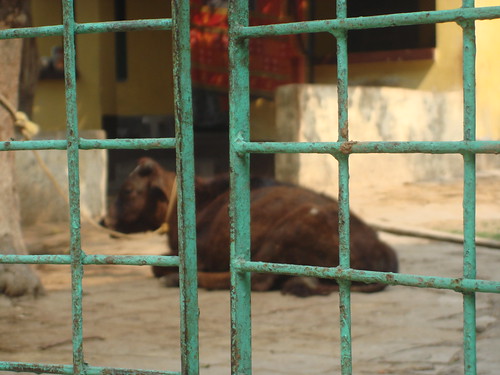


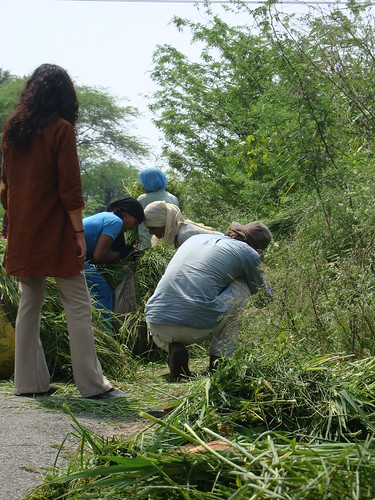
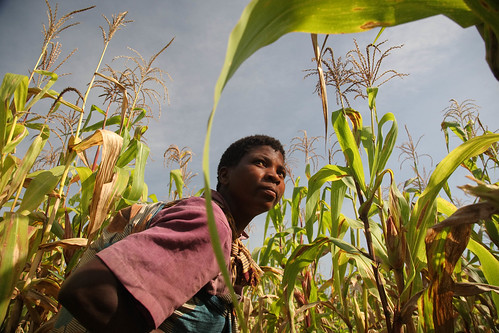
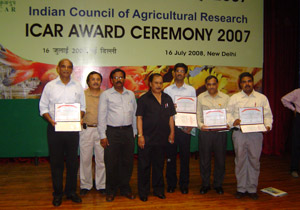
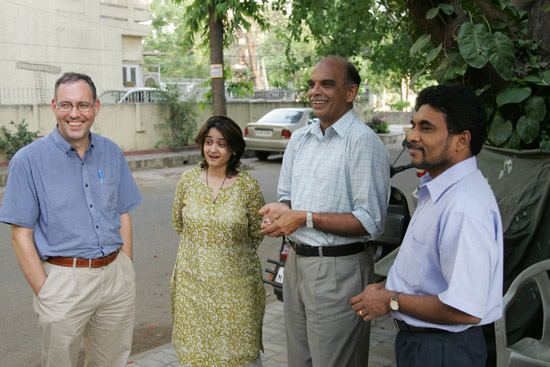



 In India, underprivileged families account for about one fourth of the population and contribute a major part of livestock production. Livestock are central to their livelihoods and culture. ‘Livestock in the livelihoods of the underpriviledged communities in India: A review’, is an extensive review of formal and grey literature addressing the premise that a good understanding by the research and development community of the role of livestock in the livelihoods of the underprivileged and their production and marketing systems is needed to guide effective research and development aiming at alleviating poverty.
In India, underprivileged families account for about one fourth of the population and contribute a major part of livestock production. Livestock are central to their livelihoods and culture. ‘Livestock in the livelihoods of the underpriviledged communities in India: A review’, is an extensive review of formal and grey literature addressing the premise that a good understanding by the research and development community of the role of livestock in the livelihoods of the underprivileged and their production and marketing systems is needed to guide effective research and development aiming at alleviating poverty.  Correct citation: Rangnekar D.V. 2006. Livestock in the livelihoods of the underprivileged communities
Correct citation: Rangnekar D.V. 2006. Livestock in the livelihoods of the underprivileged communities